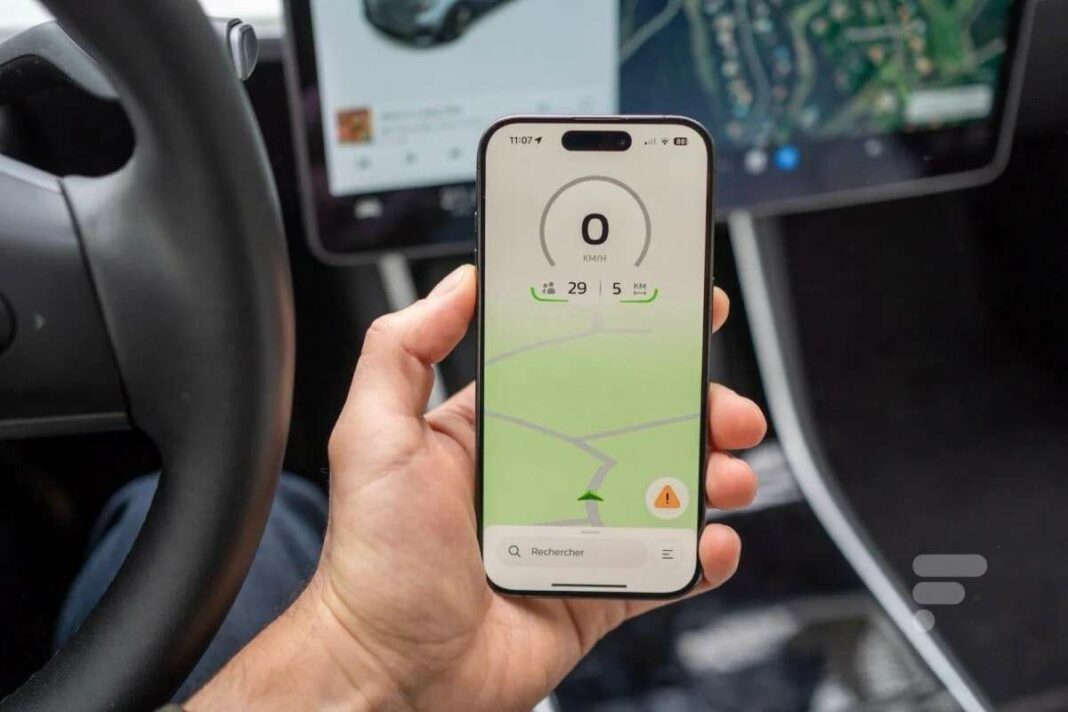Coyote has launched a new app, enhancing its interface and alert system to align with the Coyote Max device. The update introduces a modern aesthetic and an improved alert system using color gradients and gradual notifications for speed-related warnings. Real-time traffic detection replaces community reporting, while GPS navigation is integrated, competing effectively with platforms like Waze and Google Maps. Users will find customizable alert settings and a schematic aerial view for better zone visibility, making the app a robust infotainment tool.
Introducing the Revamped Coyote App
Coyote has officially launched “the new Coyote app,” which has been available since March 31 on both Android and iOS platforms. This significant update primarily focuses on a fresh redesign, aligning the application interface with the Coyote Max device introduced last November.
After sixteen years since the debut of iCoyote and a period of minimal updates, the Coyote app enhances the essence of its service: “unmissable” alerts. In fact, the mobile application pioneered a new auditory experience termed “alerting without being irritating” early in 2024, transitioning from basic beeps to more melodic alert sounds.
Enhanced Alert System and User Interface
The latest version, 12, offers users a visual experience that was previously exclusive to the Coyote Max (which will not be extended to older devices). The app’s interface, while functional for years, lacked vibrancy and depth. This redesign modernizes the aesthetic while incorporating deeper changes to improve user interaction.
Similar to the Coyote Max, the display elements for speed, current speed limits, and proximity to “scouts” have been slightly refined for better clarity. However, the standout feature of this new interface is the revamped alert system. Alerts are now more distinct and prioritized, utilizing a color gradient from cool to warm tones, with a dedicated triangle for controls (speed, lane restrictions, and red lights).
The app also adopts a more gradual alerting approach. For instance, if you approach a speed camera while exceeding the speed limit, the alerts intensify—color changes, screen flashes, and sounds become progressively pronounced as you near the “control” area, which is typically located three-quarters into a designated zone.
This setup minimizes the risk of being caught off-guard, even during distractions. It’s worth noting that since a regulation introduced by the Ministry of the Interior in 2011, radar detectors are not supposed to disclose the exact radar locations but rather “danger zones.” In practice, Coyote maintains that the control point is consistently situated three-quarters through a zone.
Additionally, the new interface opts for a schematic aerial view of your progress through zones rather than a linear display. This may require some adjustment, especially for long-time users, but it offers the advantage of displaying two overlapping zones simultaneously without needing to switch between alerts.
New Features and GPS Integration
The new Coyote app introduces various enhancements, some of which were previously missing in the Coyote Max. Traffic jams are now automatically detected based on scout speeds, moving away from the previous community-reported system. This is important because traffic conditions can change rapidly, making real-time updates essential.
Alerts for construction zones, slippery roads, and other one-time events remain community-reported, which simplifies the alert process. The report screen has been revamped to classify alerts by how frequently they are reported, ensuring that the most relevant information is prioritized.
Another improvement is the alert settings, which were initially simplified to two levels: display only or display with sound. However, based on user feedback, Coyote has committed to reinstating the option to disable voice announcements in the second quarter of 2025, aiming to provide users with more customizable options.
Unlike standalone Coyote devices, the app integrates GPS navigation capabilities, offering a map mode akin to Waze, Google Maps, or Apple Maps, alongside an expert mode focused on warnings. These modes are now better integrated, enhancing the visibility of alerts within the map while keeping navigation functions accessible.
While expert mode enthusiasts may miss the streamlined transition between modes, the app still relies on HERE’s maps and routing algorithms, which have proven reliable during our use. The competition with Waze and Google Maps is fierce, but HERE technology has consistently met our navigation needs without issue.
Competing with Navigation Giants
With its latest update, Coyote strengthens its position as a viable alternative to Waze, offering community-driven alerts. Our testing of the Coyote Max revealed superior alert systems compared to Waze, and this sentiment holds true with the new app as well.
While the Coyote Max serves as an ideal addition for vehicles with integrated GPS systems, the app shines for users who rely on their smartphones for infotainment. When connected to a car’s audio system, Coyote alerts harmoniously integrate with other navigation and media applications.
On Android, Coyote employs an overlay feature that allows users to embed a mini version of expert mode over applications like Waze or Google Maps. By turning off overlapping counters and alerts on Waze, users can leverage the strengths of both platforms simultaneously on one screen.
